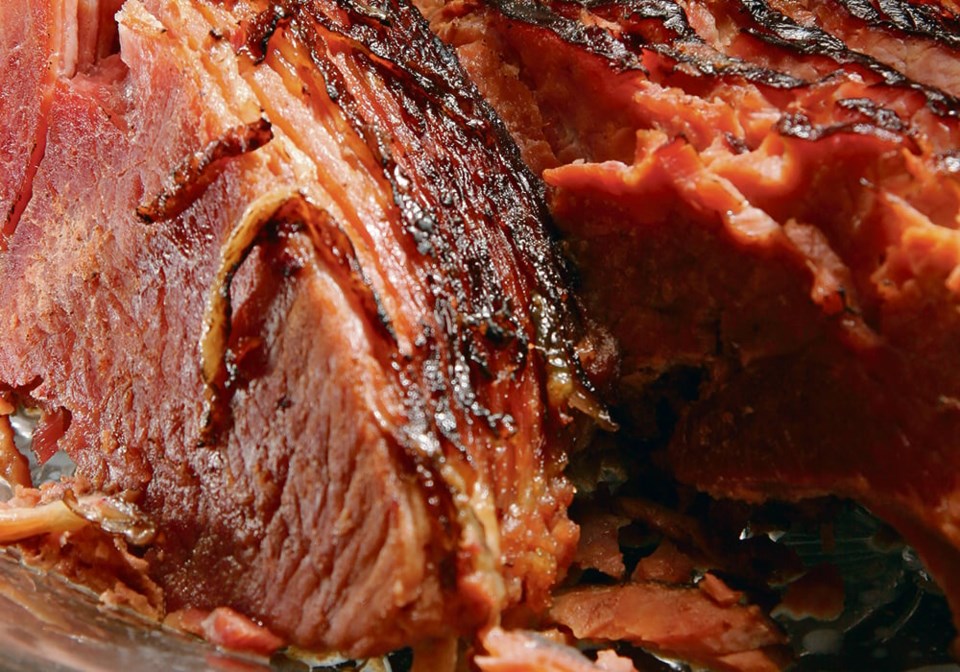WESTERN PRODUCER — The pork was sweet and succulent. It made three teenagers and a spouse happy, was easy to cook, and provided lots of leftovers — all for $21.
This particular product, which came in four-packs for $7 each of “pork loin centre-cut chops” prepared in a Montreal steak spice sauce, came from my local WalMart. (I bought three packages.)
That is the miracle of modern North American pork. It’s a nutrient-dense protein that the average family can afford, and it’s delicious.1
Except that, for many Canadians, pork isn’t delicious when it’s cooked at home. The basic pork chop can be dry and flavourless when prepared in the traditional North American way.
As my wife’s hairdresser recently said, she’d like to cook more pork because it’s affordable, but when she does, it ends up dry and not very pleasing. She knows she doesn’t have to overcook it, but like millions of other safety-conscious consumers, she can’t get past the phobia over trichinosis — even though that parasite is no longer a threat in North American commercial pork and hasn’t been for decades.
If pork became more expensive, would families still buy it?
That’s a concern for the industry and should worry farmers in this time of intense food price inflation. When food gets more expensive, consumers look to substitute cheaper products.
Fortunately for producers, pork is still relatively cheap compared to beef. The cost of buying half a dozen T-bone steaks seems nearly equivalent to the down payment on a car, so millions of home cooks will seek alternatives to throw on the grill this summer.
However, as this space has noted in recent weeks, various market-disrupting forces threaten to make the hyper-efficient North American pork market less efficient, which would boost prices. That’s bad for retaining consumer demand.
At Manitoba Pork Council’s annual meeting last week, producers and the industry heard relatively good news.
Canadian pork exports to Asia are up 13 per cent over 10 years, while a multitude of small markets consume pieces of Canada’s pork pie.
Compared to prime pork competitors such as the U.S., Canadian pork isn’t suffering. Competitors with cheaper product, such as Brazil, generally can’t offer equivalent quality, so they scoop up the lower-priced sales but leave premium sales to North American and European exporters.
That sounds comforting, but as Asian populations shrink and consumers in North America and Europe reduce their annual meat consumption, pork needs to keep its place on the plate. That’s especially true in Canada’s biggest market: Canada.
It was alarming to hear Trevor Sears of Canada Pork highlight a continuing culinary challenge.
“There’s a lack of confidence for (Canadian) consumers buying pork, which is a bit of a problem,” he said.
Why? Because if cooked according to the Government of Canada’s recommendations, you end up with the dry, flavourless pork that bothers my wife’s hairdresser.
The government, on a much-visited Health Canada safe-cooking page, says pork should be cooked to an internal temperature of 160 degrees, “which is not where we think it should be,” said Sears.In the U.S., the government recommendation is 145 degrees, which produces a much tastier meal.
That must be fixed, pronto. Millions are being misled.
Decades ago, consumers told the pork industry they were worried about “bad fats” from animals and wanted lean meat. The pork industry listened, then created a kind of pork that is dry and tasteless when overcooked. (Remember “the Other White Meat?”)
Breeders and producers have been working hard with genetics and feeding to reverse that beat-out-the-flavour direction but it will take years to fully recover pork’s great taste that some of us remember from our youth.
As rising prices squeeze family budgets, the last thing producers and the pork industry need is the crucial domestic market undermined by outdated recommendations.
Pork can taste great. That’s what my family experienced Friday night. But that was due to a prepared product that didn’t rely upon my culinary skills.
Nobody should have to worry when they pick up a package of raw, unprepared pork chops, but millions do.




